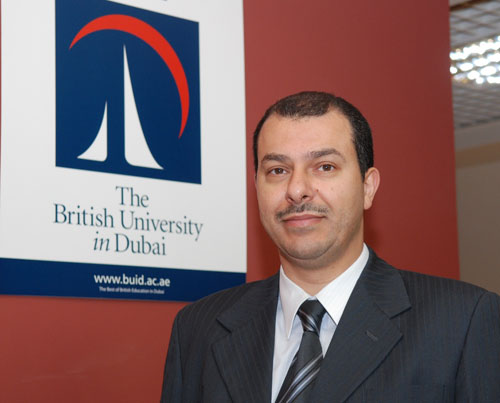New technologies key to constructing sustainable buildings in the Gulf Region, says expert.
 Other News
Other News Subscribe to newsletter
Subscribe to newsletter
| 11 Feb 2008 |
The construction industry needs to support sustainable development techniques from the moment a new building enters its planning stages, according to a leading expert.
In a paper presented to a prestigious conference in Abu Dhabi, Dr. Bassam Abu-Hijleh, Atkins Senior Lecturer, The British University in Dubai (BUiD), demonstrated two methods for ensuring that buildings could be cooled without the negative environmental impacts of conventional air conditioning.
Held under the patronage of HE Sheikh Hamdan Bin Mubarak Al Nahyan, Minister for Public Works, UAE, the 8th International Conference on Multi-purpose High-Rise Towers and Tall Buildings was entitled Innovations in Conquest of Vertical Space – Reaching for the Skies. Each year it targets MDs, project managers and civil engineers, among others, for a full and frank discussion of the theory and practice of project development, both in the region and internationally.
For Dr. Bassam, his analytical and numerical modelling analysis marks a further development in the ongoing efforts of The British University in Dubai (BUiD) – the Middle East’s first research-based postgraduate university – to delivery a Masters Degree in the Sustainable Design of the Built Environment capable of meeting the needs of young architects and project managers.

Dr Bassam Abu-Hijleh, Head of Institute and Atkins Senior Lecturer.
“Growing concern with sustainable architecture and design demands the most efficient techniques, which I am proud to be developing and sharing with a professional audience” said Dr. Bassam Abu-Hijleh. “Fortunately, The British University in Dubai provides a supportive intellectual environment in which such work can be conducted,” he added.
This innovative conference presentation coincided with the University’s decision to release AED 3 million to fund a wide range of research projects, consistent with the economic and social needs of the United Arab Emirates.
In two stand-out presentations among the seven dozen papers on offer, Dr. Bassam’s applied research distilled the experience of several recent Atkins projects to put the case for greener high-rise buildings, highlighting the use of new technologies. Each paper advocated tailored solutions for specific buildings, by responding to different energy requirement with designs based upon a building’s specific needs.
One of Dr. Bassam’s papers demonstrated a technique that allowed for heat rejection through a building’s piles. As the sun warms up the exterior of a tower, cooling is achieved by allowing the heat to escape through the concrete piles mooring the building to the ground.
In a second presentation, the concrete base of a building incorporates blocks which attract heat during the day. In turn, the blocks are cooled by passive ventilation as external air is blown in during the night, sometimes using fans. In keeping with sustainable building practices, this reduces the demands made on air conditioning systems.
Dr. Bassam has helped to develop BUiD’s MSc Sustainable Design of the Built Environment programme, available in full- and part-time study modes. Given the pressing need for postgraduate-level training in order to prepare local practitioners for their respective professions, BUiD – unusually in local higher education – allows students to conclude their Masters Degrees with a work-based research project, collaborating on developing the kind of techniques and publications showcased at the International Conference on Multi-purpose High-Rise Towers and Tall Buildings recently.




